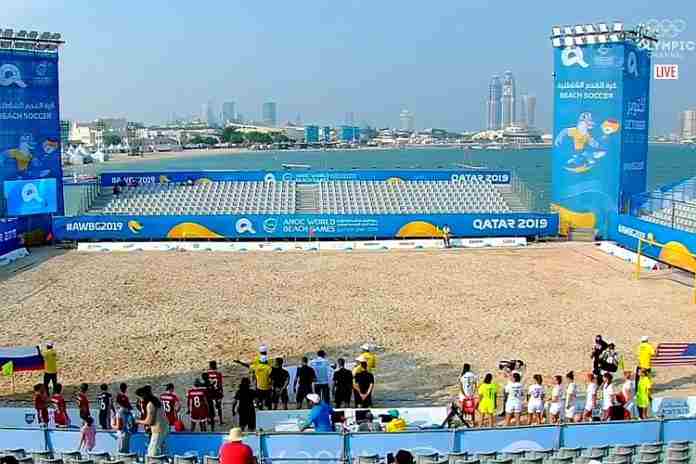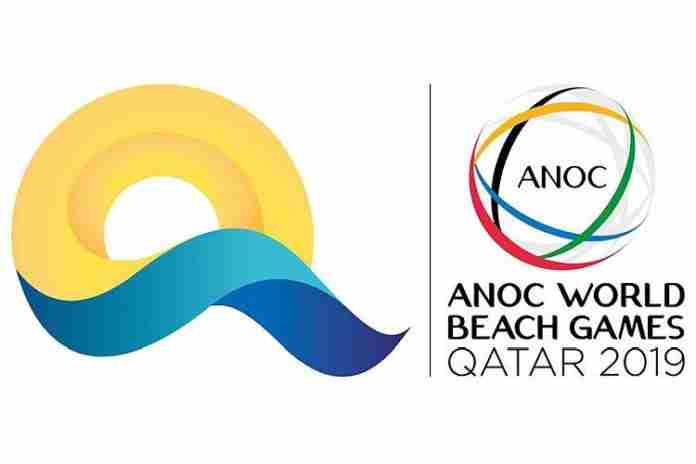 Color me confused about the five-day ANOC World Beach Games, held for the first time last week in Doha, Qatar, which took over hosting duties from San Diego, California at the end of May.
Color me confused about the five-day ANOC World Beach Games, held for the first time last week in Doha, Qatar, which took over hosting duties from San Diego, California at the end of May.
The event took place as promised, with a reported 1,240 athletes from 97 countries competing in 36 events in 13 sports.
And except for the final day, in which the Qatari men’s 4×4 beach volleyball team lost a 21-18, 26-24 heartbreaker to a U.S. squad it had defeated in pool play, almost no spectators.
So this was a success?
All the reporting from Doha was that the event was terrific. But there was no report of a post-Games news conference or statement about the event. The only comment from the host organization – the Association of National Olympic Committees – was a sentence in a long news release summing up the ANOC General Assembly (here):
“ANOC also congratulates the Qatar Olympic Committee and the Local Organising Committee for the hosting of the first ever ANOC World Beach Games and for the great success of these Games.”
The umbrella organizations for the world’s National Olympic Committees (ANOC) and for the International Federations (GAISF) both put on first-time major events in 2019 and both were declared a success.
By what standard? And what standard should they be judged on?
The World Beach Games certainly had quality elements to it:
● The event came off, which is no small feat for any first-time program. Credit to the Qatar government for paying for it, and for the Qatar NOC (and others) for getting it done.
● The sports competitions, for the most part, appeared to be run well and with a minimum of difficulties. There were some technical issues, but anyone who has run events on beaches will appreciate how difficult it is to work with sand.
● The venue preparation and event presentation were world-class. All of the venues were heavily decorated, with excellent use of color. While the competition was going on, there was constant noise – both from public address in English and Arabic and a live D.J. – that created an impression of activity and size, especially for remote viewers who could not see the empty stands.
● The awards ceremonies were well done and the use of scoreboards to show images of flags – rather than having to being on actual flagpoles and flags and people to raise and lower them – was a somehow suitable part of the programming, consistent with the age-of-high-technology vibe of the event.
As with any competition, no matter the level, the winners loved getting their medals and the smiles were genuine. And the mascot, Dolphy, was fun, both in person at the events and as plush toys handed out with the awards. (And good for the Qatar organizers not to give flowers!)
● The television work by the Olympic Channel was excellent and you could check out hours and hours of competition, mostly live-streamed. The Olympic Channel – unlike YouTube – does not show how many times a particular video has been accessed, so there is no way to know for sure if the event drew a wide audience (no) or a smattering of interest (yes).
On those scores, the World Beach Games was great. But there were no television rights sold and almost no home-TV broadcasts in any country, the spectator interest was almost nil (even with free admission) and the event was substantially paid for by the Qatar government, in cooperation with several of its state-own companies which signed on as sponsors.
So this is success?
The ANOC point-person for the World Beach Games, the highly-respected Swede Gunilla Lindberg stated that several countries have signaled interest about hosting a second edition of the World Beach Games, ostensibly for 2021. By that measure, then, the first one had to be a success if others want to hold it too, right?
But it was not so long ago – late September, in fact – that track & field athletes were complaining bitterly about the lack of spectators at the Khalifa International Stadium in Doha for the IAAF World Track & Field Championships. That event finally filled up at the end when national hero Mutaz Essa Barshim won the high jump in spectacular fashion, followed by the final two days of relays. But the empty stadium of the early days will be one of its lasting memories.
Can it be both ways?
One of the major themes of international sport today, led by the International Olympic Committee, is sustainability. This extends to the control of costs, of environmental impact and the burden that mega-events like the Olympic Games bring to a city, region or country.
Clearly, the World Beach Games did not pay for themselves, and drew modest interest both locally and worldwide. The same is true for the GAISF-run World Urban Games in Budapest (HUN) in mid-September, which impressively filled the Cycling BMX Freestyle Park bleachers, and claimed 50,000 total spectators over the three days of events. However, if you look closely at photographs of the events, many were quite lightly attended.
As first-time events, they came off and therefore can rightly be called successful. Putting on any event for the first time is a challenge, and these had some scale to them.
But what is the point?
If the idea is just to give more athletes more chances to compete (as long as someone will pay for it), then these are fine additions and maybe ANOC and GAISF can continue to find cities or countries willing to foot the bill, possibly as an incremental convention/tourism draw (Budapest is the worldwide master at this). Both had mostly non-Olympic events and even the competitions in Olympic programs caused barely a ripple in the international competition calendar.
But if the idea is to create an event which has some worldwide impact – or even notice – as a “celebration” of beach or urban sports, then the inaugural editions of both the World Beach Games and World Urban Games didn’t get very far.
If the concepts of accountability and sustainability mean anything, then both ANOC and GAISF – as well as other umbrella organizations such as FISU, the university-sports federation – have to consider whether there are actual, identifiable benefits to these new events and others already held. Can they be held in a fiscally responsible way, enough to break even and not burden taxpayers? Shouldn’t that be part of the sustainability question, too?
Both the World Beach Games and World Urban Games came off and the combined total of about 1,540 competitors had a wonderful time. But the question to be asked is whether they mattered enough to be continued.
That answer is yet to be determined.
Rich Perelman
Editor
If you enjoyed this commentary, sign up to receive our exclusive TSX Report by e-mail by clicking here. You can also refer a friend by clicking here.

























